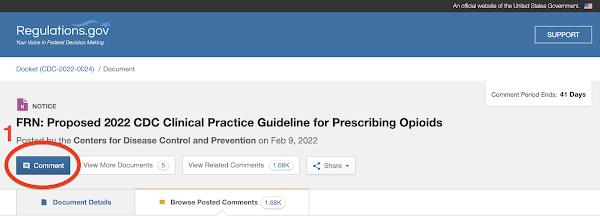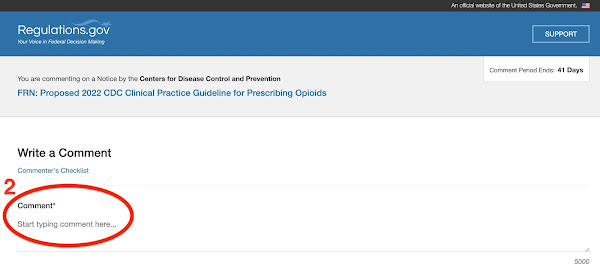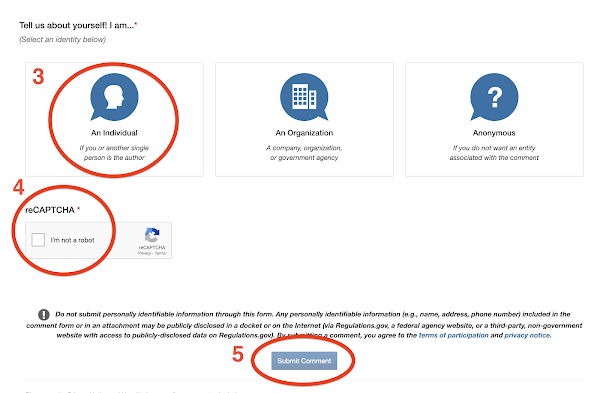RLS ACTION ALERT! Instruct CDC To Include Chronic Diseases Like RLS in Opioid Prescribing Guidelines
Tuesday, March 01, 2022RLS Community: Provide Your Comments to CDC by April 10
Background
The Centers for Disease Control and Prevention’s (CDC) National Center for Injury Prevention and Control is in the process of updating the 2016 CDC Guideline for Prescribing Opioids for Chronic Pain. The draft updated Clinical Practice Guideline for Prescribing Opioids is available for public comment in the Federal Register until April 10, 2022. The RLS Foundation urges all RLS community members to add their voice to request that the CDC include chronic diseases like RLS in the treatment guidelines. Below are the 5 steps you can take to let the CDC know that low-total-daily dose opioids must be included as a viable treatment option for RLS patients.
Instructions
1. Start on webpage: https://www.regulations.gov/document/CDC-2022-0024-0001/comment and click on "Comment"
2. Enter your comment using the sample comment below as a template.
3. Identify yourself as an individual, 4. Check the box for reCAPTCHA, and 5. Submit Comment.
Thank you for joining our RLS advocacy efforts by raising your voice for RLS, sleep and sleep disorders!
-----*SAMPLE COMMENT*-----
I thank you for revising the CDC Clinical Practice Opioid Prescribing Guideline, but the draft does not address chronic conditions like RLS that are different from chronic pain. Restless legs syndrome (RLS) is a chronic neurological disease that causes an urgent need to move the legs and, in some cases, other parts of the body as well. The symptoms make it impossible to sleep or even to sit quietly, which seriously affects every aspect of daily life.
In the U.S., nearly 12 million adults and children suffer from RLS. There is no cure. A few prescription medications may relieve the symptoms for a while, but over time those same medications can make the symptoms worse. When all other medical therapies fail, ample scientific research supports the use of low-total-daily-dose opioids to treat severe RLS.
[Tell your own experience with RLS in a short paragraph.]
The first physician to diagnose RLS more than 300 years ago treated it successfully with opioid therapy. Ironically, the 2016 CDC Opioid Prescribing Guidelines often made physicians afraid to prescribe opioids for any reason, even for patients with severe, unrelenting RLS who had been on the same low-total-daily-dose opioid therapy for decades. I urge the CDC to include a section in the 2022 Opioid Prescribing guidelines to address chronic medical conditions like RLS that require opioid therapy as a last resort, in low-total-daily doses, carefully monitored.
Thank you for your consideration of these vital issues, and please consider the RLS Foundation at www.rls.org as a resource for scientifically-based information about RLS, as it is for members like me.
Act NOW!
Add your comments by April 10 to be sure that the committee receives as many comments as possible from the RLS community. Please contact the RLS Foundation for assistance at info@rls.org.










0 comments